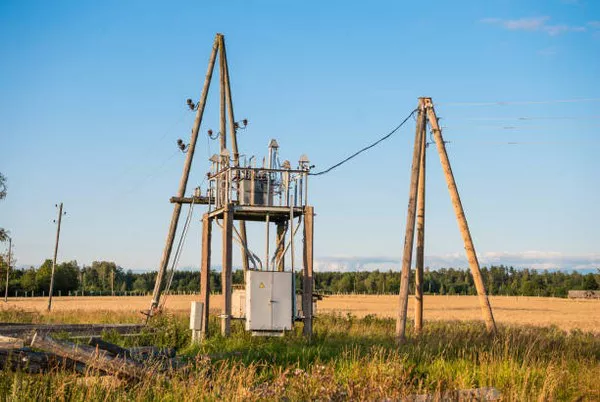Transformers are indispensable electrical devices used in power distribution systems, converting voltage levels for efficient energy transmission. These vital components play a crucial role in ensuring the reliability of electrical networks. However, like any electrical equipment, transformers have their limits, and exceeding these limits can lead to catastrophic consequences. In this article, we will explore what happens when a transformer is overloaded and the potential consequences that can result from such occurrences.
Transformers and Their Role in Electrical Systems
Before delving into the implications of transformer overload, it’s essential to understand the fundamental role that transformers play in electrical systems. Transformers are devices that change the voltage level of alternating current (AC) electrical energy. They consist of primary and secondary coils wound around a common magnetic core. By varying the number of turns in each coil, transformers can step up (increase) or step down (decrease) voltage levels as needed.
Transformers are widely employed in electrical distribution networks to transmit electrical power efficiently. They are critical in delivering electricity from power plants to homes, industries, and commercial establishments. Properly functioning transformers ensure that voltage levels are within safe and acceptable limits for consumption and equipment operation.
Transformer Ratings and Overload
Every transformer is designed with specific ratings, which include its maximum capacity in terms of power handling and temperature rise. These ratings dictate the safe operating limits of the transformer. The two primary ratings to consider are the kVA (kilovolt-amperes) rating, which indicates the transformer’s capacity to handle power, and the temperature rise rating, which specifies the maximum allowable temperature increase during operation.
When a transformer is subjected to electrical loads that exceed its rated capacity, it becomes overloaded. Overloading can happen due to various reasons, including increased demand for electricity, faulty equipment, or errors in system design. Regardless of the cause, the consequences of transformer overload can be severe and far-reaching.
Consequences of Transformer Overload
Increased Temperature Rise: Transformer overloading leads to an increase in the device’s temperature, which is a direct consequence of exceeding its current-carrying capacity. Prolonged exposure to elevated temperatures can damage the transformer’s insulation, insulation fluid, and core materials. This, in turn, can reduce the transformer’s operational lifespan.
Reduced Efficiency: An overloaded transformer operates less efficiently than one within its rated capacity. Inefficiency results in higher energy losses and increased power consumption. Over time, this can lead to increased operational costs for utility companies and end-users.
Insulation Degradation: The excessive heat generated during overload conditions can cause the insulation material inside the transformer to deteriorate. This deterioration compromises the dielectric properties of the insulation, increasing the risk of electrical breakdown and short circuits within the transformer.
Oil Degradation: Many transformers use oil as a cooling and insulating medium. Overloading can cause the oil to heat up and degrade. Degraded oil loses its ability to dissipate heat effectively and can lead to accelerated aging of the transformer. Additionally, the formation of sludge and carbon deposits can further impair the transformer’s performance.
Mechanical Stress: Overloaded transformers are subjected to higher mechanical stresses due to increased magnetic flux and current flow. This stress can lead to mechanical failures, such as winding deformation, core damage, and even catastrophic explosions in extreme cases.
Voltage Regulation Issues: Transformers are designed to maintain stable voltage levels within specified limits. Overloading can cause voltage regulation problems, resulting in voltage fluctuations and instability in the electrical distribution network. This can damage sensitive electronic equipment and disrupt industrial processes.
Fire Hazard: In severe cases of transformer overload, the combination of elevated temperatures and electrical faults can lead to a fire hazard. Overheated transformers may ignite nearby flammable materials, posing a significant risk to safety and property.
Preventing Transformer Overload
To mitigate the potential consequences of transformer overload, several preventive measures can be implemented:
Regular Maintenance: Scheduled maintenance and inspection of transformers are essential to detect signs of overheating, oil degradation, or other issues before they escalate.
Load Monitoring: Implementing load monitoring systems can help utility companies and operators keep track of the transformer’s load and take corrective actions when necessary.
Load Shedding: Automatic load shedding systems can help prevent overloading by disconnecting non-essential loads when the transformer approaches its capacity limit.
Transformer Upgrades: In cases where transformers are consistently overloaded, upgrading to a higher-rated transformer may be necessary to meet increasing power demands.
Conclusion
Transformers are the backbone of electrical distribution systems, and their proper functioning is crucial for ensuring a stable and reliable power supply. Transformer overload poses significant risks, including reduced efficiency, mechanical stress, insulation degradation, and fire hazards. To maintain the integrity and longevity of transformers, it is essential to operate them within their rated capacity and implement preventive measures to avoid overloading. Regular maintenance, load monitoring, load shedding systems, and, when necessary, transformer upgrades can help mitigate the risks associated with transformer overload and ensure the continued reliability of electrical networks.

